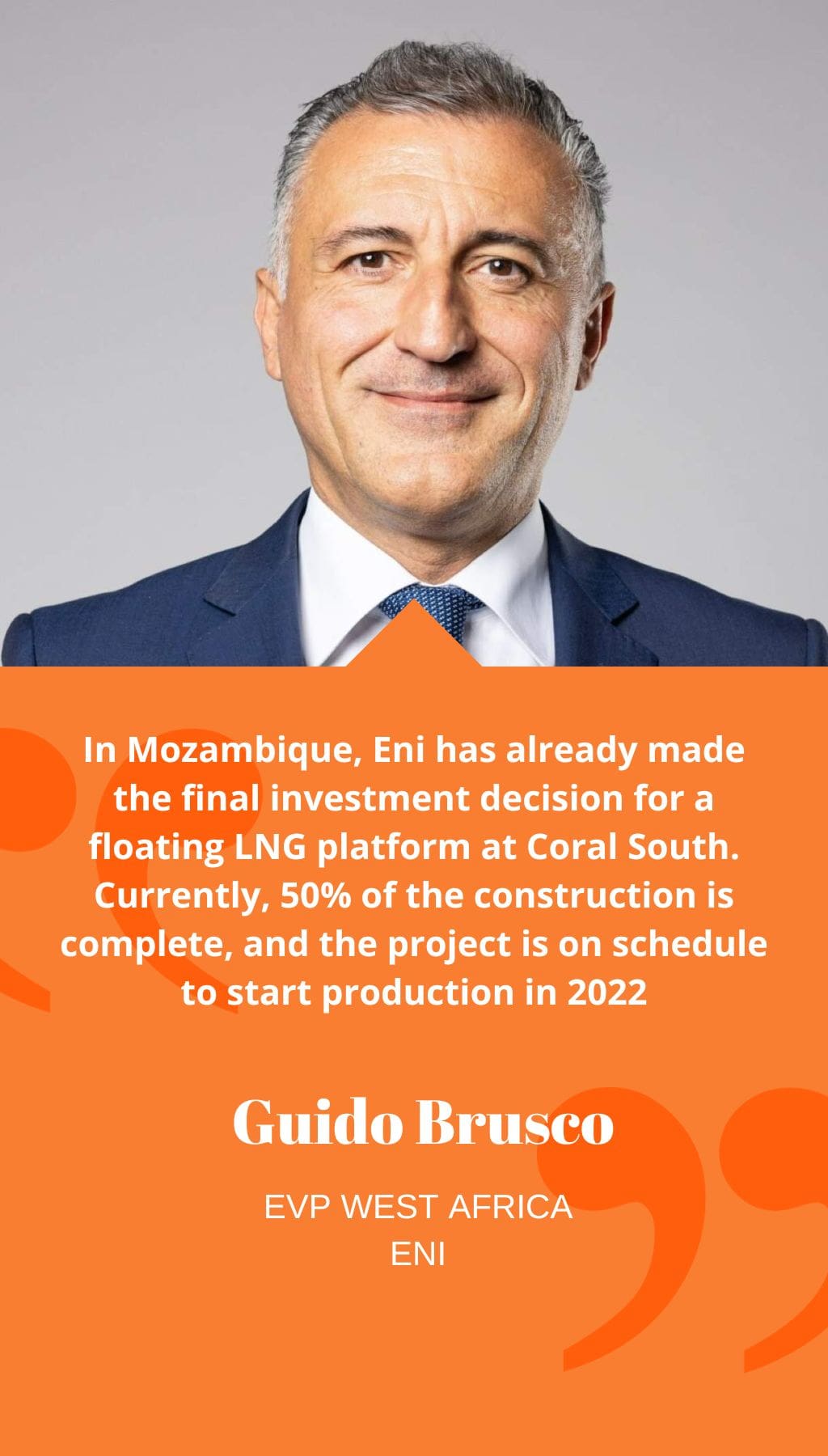
- Mozambique | 29 September 2020

Could you provide an overview of Eni’s history in Africa and the importance of the sub-Saharan region for the company?
Eni’s presence in Africa dates back to the 1950s when the company began operations in Egypt and Libya. Over the years, Eni has expanded its footprint in the continent and currently, almost 60% of its production and 70% of its reserves are located in Africa, making it the largest international oil company (IOC) in the region. Eni’s main countries of focus in Africa include Egypt, Libya, Angola, Nigeria, Algeria, Congo, Ghana, and Mozambique. The sub-Saharan region plays a crucial role for Eni, contributing around 420,000 barrels of oil equivalent per day (boepd), which is more than 20% of the company’s global production. Moreover, Eni recognizes the significant growth potential in sub-Saharan Africa and is actively involved in various energy initiatives beyond oil and gas, such as renewables and forestry initiatives.
Can you provide an update on Eni’s progress in Mozambique, particularly regarding Area 4?
In Mozambique, Eni has already made the final investment decision for a floating LNG platform at Coral South. Currently, 50% of the construction is complete, and the project is on schedule to start production in 2022. Eni has brought the Saipem 12000 drill-ship to Mozambique to drill the six subsea wells that will supply the facility. Additionally, Eni has an upcoming project in collaboration with ExxonMobil. When the discovery was made in Area 4, Eni sold stakes to CNPC and ExxonMobil to expedite monetization efforts. Eni remains the operator of the upstream activities, while ExxonMobil will handle the midstream activities and develop the onshore liquefaction facility.
What are the latest developments for Eni in Congo and Nigeria?
In Congo, Eni has several legacy assets, but the current focus is on Marine XII. Eni is developing Phase 2 of Nené Marine and monetizing the associated gas by installing a third turbine in the Centrale Electrique du Congo (CEC) power plant onshore, which will increase its capacity from 300 MW to 450 MW. The CEC power plant currently supplies nearly 70% of the domestic market. In Nigeria, Eni has recently completed a successful campaign in the Abo deepwater field, doubling its onshore production from 12,000 to 24,000 bpd (barrels per day). Eni is also conducting a significant infilling wells campaign in its four onshore concessions to further increase oil production and enhance gas delivery to Nigeria LNG.
With such a substantial presence in Africa, how does Eni navigate local content requirements?
Eni recognizes the importance of local content and actively works to meet local requirements in the countries where it operates in sub-Saharan Africa. Eni employs approximately 3,000 direct employees in the region, with a significant percentage being locals, ranging from 70% to 90% depending on the maturity of the country. The company has implemented a rigorous multi-area training program to develop local human resources. Moreover, Eni’s commitment to capacity building extends beyond individuals to the local industrial base. This approach aligns with Eni’s mission and also serves as a cost reduction tool. For instance, in Ghana, Eni’s OCTP project, which represented the largest single investment in the country, awarded 330 contracts worth US$2 billion to Ghanaian contractors out of a total investment of US$8 billion, demonstrating Eni’s commitment to supporting local businesses and industries.














